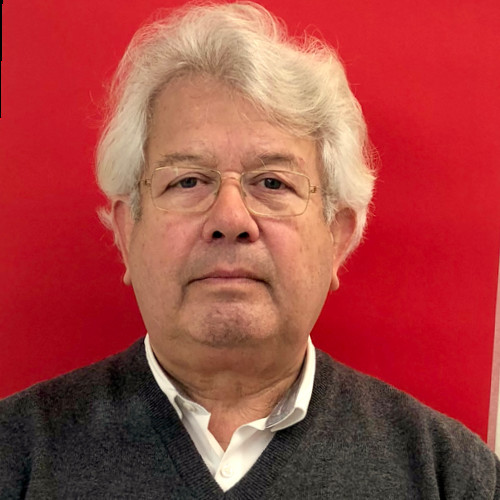Comparison of Neutralizing Antibody Response to Type 1 Polio Virus on Healthy Infants Receiving either Oral Monovalen Polio Vaccine Type 1 or Oral Trivalen Polio Vaccine Given with Basic DTP/Hb Immunization
Downloads
In March 2005, there was outbreak of Polio-1 and expanded throughout Java and Sumatera island. Oral monovalent polio vaccine
type 1 (mOPV1) had succeeded in evereeming polio outbreak in Indonesia in 2005. This study aimed to compare neutralizing antibody
response to type 1 polio virus in healthy infants receiving either mOPV1 or oral trivalent Polio Vaccine (tOPV), given with other basic
vaccination (DTP/HB). Randomized controlled singel blind clinical trial on healthy infants range age 42 to 80 days who had received
first oral polio vaccine before 1 month of age. Trial group received mOPV1 and control group tOPV, each had 3 times of vaccination.
Blood samples were taken three times (pre vaccination, post second and third vaccination) for measurement of neutralizing antibody to
polio virus. Thirty subjects from mOPV1 group and 29 from tOPV group were analyzed. Post second vaccination, mOPV1 group (456)
had more increase in geometric mean titer of neutralizing antibody than tOPV group (317) but not significant (p=0.514). Post third
vaccination the level of neutralizing antibody titer was almost equal in both groups. Proportion of seroconversion to type 1 polio virus
in mOPV1 group 53.9%, 57.7% and tOPV group 25.9%, 41.7% (on second and third evaluation respectively), both were statistically
insignificant. Antibody response measured by neutralizing antibody titer and proportion of seroconversion on antibody to type 1 polio
virus in healthy infants receiving mOPV1 vaccination was similar to they receiving tOPV.
Dep. Kes. RI (Subdit Surveilans AFP). 2006. Laporan Kasus-kasus Polio tahun 2005–2006. Dirjen PPM & PLP, Dep. Kesehatan RI.
Hadinegoro Sri Rezeki S. 2006. Dalam : Shah Nitin K, PPT: Polio Eradication Global Challenges and Solution. Available at: http://www.drnitinshah@hotmail.com. Assessedi 12/04/2007.
Ismoedijanto, Darmowandowo W, Basuki PS, Soegijanto S, Atmadji DS, Kaspan F. 2005. Eradikasi Polio dan Permasalahannya. Dalam PKB Ilmu Kesehatan Anak. Surabaya: Lab/SMF IKA RSUD Dr.Soetomo – FK Unair, 35; 1–19.
Rosenbauero. 2005. Global Polio Eradication Initiative. Monovalent Oral Polio Vaccine. Fact sheet Available at: http://www.mOPVactsheetfinal.2005.pdf Assessed 15/12/2006.
Shah NK, John TJ, Thacker N, Vahishtha V, Kalra A, Ugra D. 2006. Polio Eradication Strategies in India: Recommendations under IAP Action Plan 2006. Indian Pediatrics. 43; 1057–63.
Robertson S. 1996. The Immunological Basis for Immunization series. Module 6: Poliomyelitis. WHO; 1-21. Available at: http://www.who.int/vaccinesdocuments/DoxTrng/h4tibi.htm. Assessed 15/12/2006.
PT. Bio Farma. 2006. Tes Mikronetralisasi untuk antibodi Polio.
Appendix 3 Prosedur Laboratorium Serologi Virus Polio. Bio Farma, Bandung: 14–18.
Sutter RW, Kew OM, CochiSL. 2004. Poliovirus Vaccine Live.
Dalam: Plotkin SA, Orenstein WO: Vaccines. Edisi 4. Philadelphia: WB Saunders Co; 651–95.
The Indonesian Journal of Tropical and Infectious Disease (IJTID) is a scientific peer-reviewed journal freely available to be accessed, downloaded, and used for research. All articles published in the IJTID are licensed under the Creative Commons Attribution-NonCommercial-ShareAlike 4.0 International License, which is under the following terms:
Attribution ” You must give appropriate credit, link to the license, and indicate if changes were made. You may do so reasonably, but not in any way that suggests the licensor endorses you or your use.
NonCommercial ” You may not use the material for commercial purposes.
ShareAlike ” If you remix, transform, or build upon the material, you must distribute your contributions under the same license as the original.
No additional restrictions ” You may not apply legal terms or technological measures that legally restrict others from doing anything the license permits.























